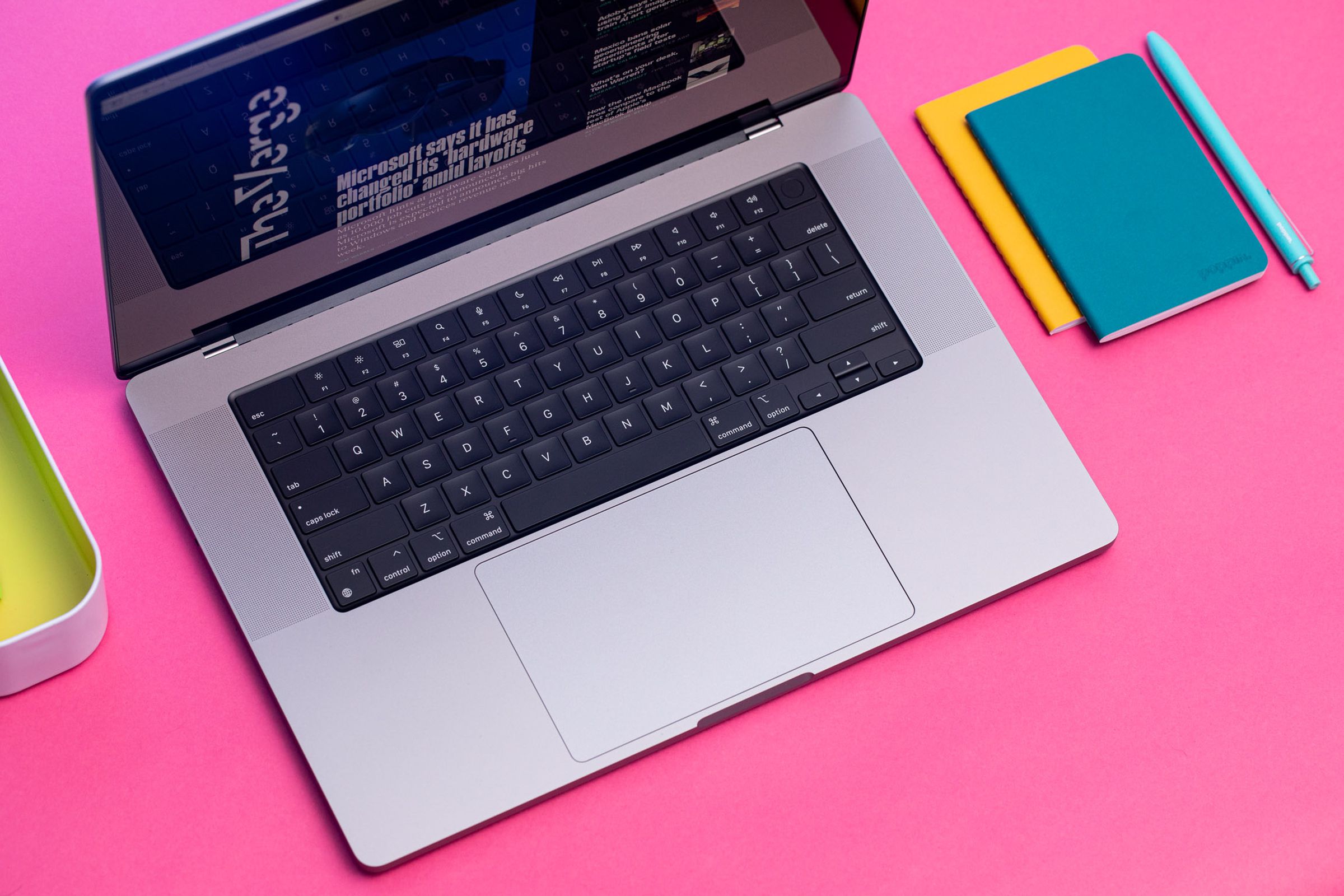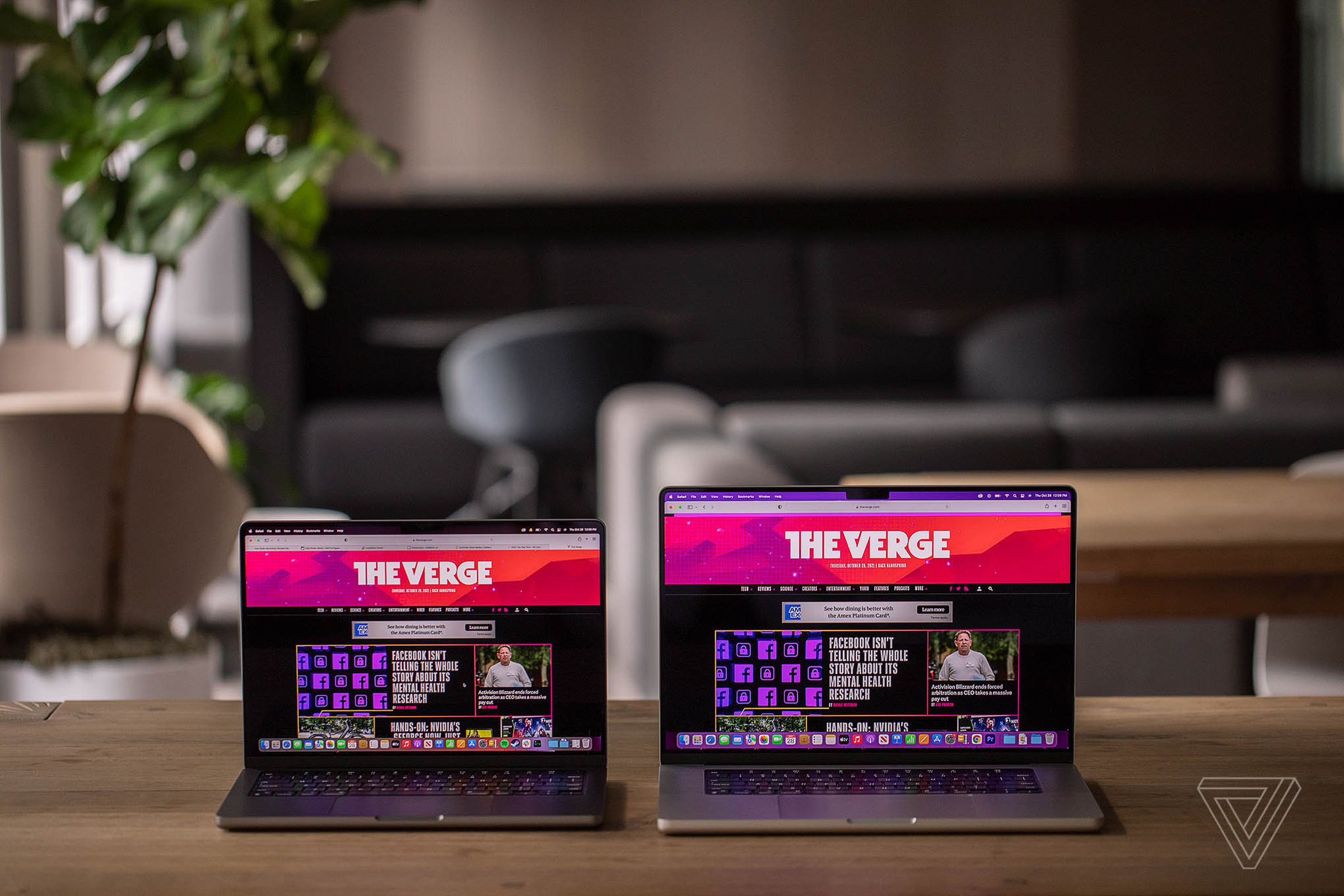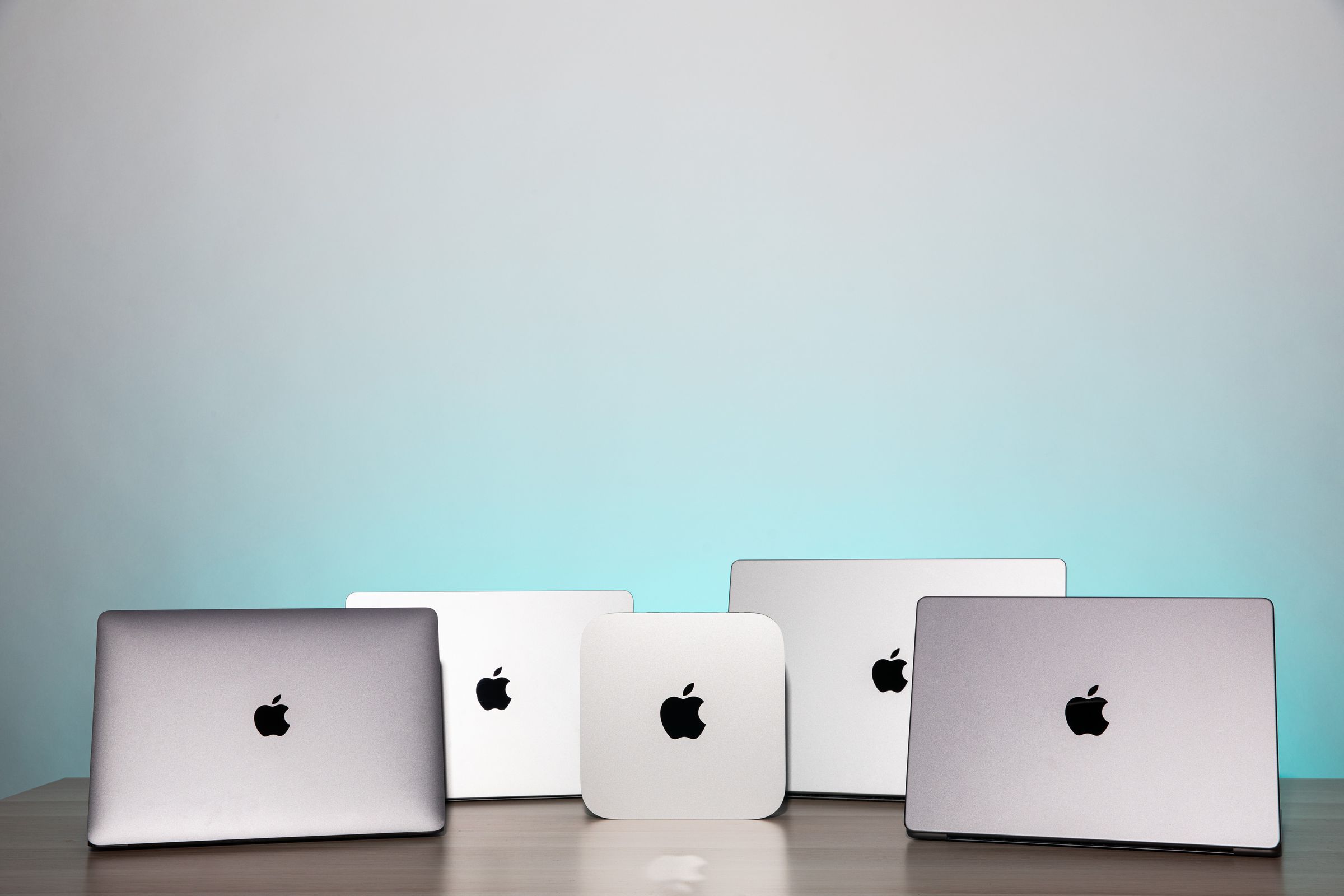I recently published my review of the MacBook Pro 16 with M2 Max, which Apple released at the beginning of 2023. Now I’ve finally gotten my hands on the less powerful (and less expensive) MacBook Pro 16 powered by Apple’s M2 Pro chip. I’ve run the various benchmarks and done the various tasks, and I’ve even (finally) run the battery into the ground. Today, I’m here to talk to you about how these chips stack up to each other to help you decide which MacBook Pro model is right for you.
Behold, the benchmarks (scroll to the right to see more):
M2 Pro and M2 Max Benchmarks
| MacBook Pro 16 (M2 Max, 12-Core CPU / 38-Core GPU / 64GB) | 0:01:38 | 14757 | 1684 | 14796 | 15071 | 2037 | 70217 | 103fps | 1173 | 78.544 seconds |
| MacBook Pro 16 (M2 Pro, 12-Core CPU / 19-Core GPU / 32GB) | 0:04:32 | 14757 | 1641 | 14757 | 15033 | 1961 | 45139 | 58fps | 1027 | 82.088 seconds |
M2 Pro vs. M2 Max: price
Sixteen-inch M2 Pro models start at $2,499, while M2 Max models start at $3,099. The base M2 Pro model has 16GB of memory and 512TB of storage, while the base M2 Max has 32GB of memory. Bumping that M2 Pro model up to 32GB of memory puts it at $2,899, giving the M2 Max about a $200 premium over the M2 Pro for identical specs. That’s a consistent differential regardless of how you tweak the specs.
If you want to jump up to the M2 Max with 38 GPU cores (which is the one I tested), however, that’s going to be an additional $200 premium. This is the only CPU that can be paired with 96GB of RAM — the 30-core M2 Max model maxes out at 64GB.

M2 Pro vs. M2 Max: Battery Life
I averaged close to 14 hours of nonstop use on the M2 Max model with my workload. I can’t guarantee everyone will get that amount of time, especially since my workload largely involves Chrome tabs, Google docs, and some streaming, but I do think most people will get more out of the M2 Max than they would out of the vast majority of 16-inch laptops on the market.
I averaged closer to 17 nonstop hours on the M2 Pro model. In practice, this means I can use it on battery for two to three days at a time, plugging it in like every so often. While the M2 chips don’t have as massive of a battery life delta that their M1 predecessors did, the M2 Pro — for my personal workload — had around 20 percent more juice to a charge than the M2 Max.
For me, this battery life differential wouldn’t be a dealbreaker. At a certain point, long battery is long battery. I generally use a MacBook Air as my personal computer, which averages me around 13 hours between charges, and I don’t feel that I need more. That said, if you’re really seeking a device that never dies, the M2 Pro may be slightly more attractive to you. For everyone else, it should be another part of the calculus: in addition to paying extra dollars for the M2 Max over the M2 Pro, you’re paying some hours of battery life.
M2 Pro vs. M2 Max: CPU
The difference in CPU power between the M2 Pro and M2 Max depends on which model you go for. All 16-inch M2 Pro models have 12 CPU cores. If you go for a 14-inch MacBook Pro, you can get an M2 Pro with 10 CPU cores, but the 16-inch models all have 12 CPU cores, regardless of whether you go for the Pro or the Max.
We had the 16-inch model in both cases, so both of these devices had 12-core CPUs. These chips have the same architecture — so if you’re doing primarily CPU-heavy work during your day, you’ll get very little benefit from the Max over the Pro.
Don’t believe me? Check out the Cinebench and Geekbench results in the chart above, which are quite close together (and identical in some cases).
Now, there’s one caveat here. The M2 Pro models max out at 32GB of memory, whereas the M2 Max can handle as much as 96GB. Folks who need to spend more on a 64GB or 96GB model probably know who you are: people who work with big datasets, for example, and are consistently handling large amounts of information may have a better time with one of those (very expensive) M2 Max models.

M2 Pro vs. M2 Max: GPU
The more significant difference between these two chips lies in GPU power. You can basically think of the M2 Max as the M2 Pro with some extra graphic chops.
All 16-inch M2 Pro units have 19 GPU cores, while M2 Max buyers have a choice of 30 or 38 cores. (Our test unit has 38.)
In Geekbench Compute, which tests GPU power, we can see over a 55 percent increase in graphics power, which tracks with the close to 50 percent increase in GPU core count. On Shadow of the Tomb Raider, a GPU-heavy game benchmark, the M2 Max did close to 80 percent better than the M2 Pro. That’s a very visible difference on the 120Hz screens these MacBooks have.
There’s one other major difference between these chips that only some of you will care about, which is that the M2 Max has two video encode engines and two ProRes engines, while the M2 Pro only has one of each. This means that video editors specifically can expect faster encoding and playback speeds from the M2 Max. (Exactly how much faster can be inconsistent — more on that in a minute.)
So those are the raw numbers. How does this all shake out during a workday?

M2 Pro vs. M2 Max: real-world tasks
The M2 Max is noticeably faster in video work. It beat the M2 Pro in PugetBench for Premiere Pro. My experience using it to edit was incredibly speedy. It flew through playback and exports. If I were a video editor (assuming my employer was footing the bill), I’d absolutely want one of these things.
The M2 Pro was not quite as consistent. I exported the same five-minute 4K video a number of times on it and could see a time anywhere from around the two-and-a-half minute mark to over six minutes. The process did not get consistently faster or consistently slower as I went on testing; there was no rhyme or reason for the varying times. What I did notice was that the M2 Pro often got hung up on graphics that the M2 Max was able to breeze right through. Becca Farsace, our senior video producer, had the same experience exporting a different video file.
With that said, the M2 Pro is hardly a slow chip. Adobe Premiere Pro work on it was still quite smooth. The M2 Max was both a bit louder and hotter than the M2 Pro during Premiere work (it has a High Power Mode specifically meant to maximize performance during sustained workloads, which the M2 Pro doesn’t have). Becca’s recommendation in our recent guide to the M2 line was that folks who work with 3D, animation, 8K content, and 4K content over an hour long should seriously consider the M2 Max model. The M2 Pro should be fine for everyone else (unless money is really no object).
The difference was not as stark in Xcode performance. The M2 Max completed the Xcode Benchmark just over three seconds faster than the M2 Pro. That’s a difference, sure, but it’s not nearly as wide as, say, the gap between the M2 Pro and the M1 Max. I would not expect the M2 Max to be a necessity for lighter tasks like web design.
I know there are many, many tasks people might want to use these MacBooks for that are not covered here. In general, the best way to approach this decision is to figure out: A. how much of your workload leverages heavy graphics and B. whether you need to get that work done with every ounce of speed you can get.
Oh, and I don’t imagine that any of you were considering this, but just in case you were — no, it does not make a ton of sense to upgrade to these M2 models from the M1 line. The M1 and M2 MacBook Pros were expensive and fast machines, and they should still have quite a bit of life in them. But if you are still on an Intel MacBook Pro and didn’t spring for the M1 series last time around, either the M2 Pro or Max MacBook Pro will provide a considerable jump up in performance, thermals, and battery life.
